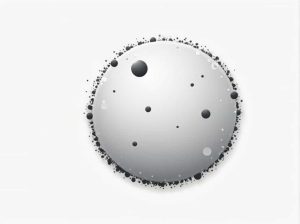The Hertzsprung-Russell (H-R) diagram is one of the most important tools in astronomy for classifying stars based on their luminosity and temperature. It helps scientists understand the life cycle of stars and their evolutionary stages. But where does our Sun fit into this diagram?
What Is the Hertzsprung-Russell Diagram?
The H-R diagram is a graphical representation of stars, first developed independently by Ejnar Hertzsprung and Henry Norris Russell in the early 20th century. It plots stars based on two main factors:
- Luminosity (brightness) – Measured in relation to the Sun’s brightness.
- Surface Temperature – Measured in Kelvin (K), with hotter stars appearing blue and cooler stars appearing red.
This diagram reveals distinct groups of stars, such as main sequence stars, giants, and white dwarfs.
Where Is the Sun on the H-R Diagram?
Our Sun is classified as a G-type main sequence star (G2V). This means:
- It is in the middle of the H-R diagram.
- It has a surface temperature of about 5,778 K.
- Its luminosity is 1 solar unit (since it is used as the standard for comparison).
- It produces energy through nuclear fusion, converting hydrogen into helium.
The Main Sequence and the Sun’s Role
Most stars in the universe, including our Sun, are part of the main sequence, a diagonal band that stretches across the H-R diagram. Stars in this category:
- Fuse hydrogen into helium in their cores.
- Maintain a balance between gravity and radiation pressure.
- Have relatively stable lifetimes, lasting billions of years.
The Sun has been in the main sequence for about 4.6 billion years and is expected to stay there for another 5 billion years before evolving.
How Does the Sun Compare to Other Stars?
The Sun is neither the hottest nor the coolest star. Compared to other stars on the H-R diagram:
- Hotter and more massive stars (O and B types) – These are blue and extremely luminous but have much shorter lifespans.
- Cooler and smaller stars (M-type red dwarfs) – These are dimmer and longer-lived, lasting tens to hundreds of billions of years.
What Happens When the Sun Leaves the Main Sequence?
Eventually, the Sun will exhaust its hydrogen fuel, causing changes in its structure:
- Red Giant Phase – The Sun will expand dramatically as it starts fusing helium.
- Planetary Nebula Formation – The outer layers will be ejected into space.
- White Dwarf Stage – The Sun’s core will collapse into a dense, hot remnant.
This transformation will take billions of years, and while Earth will be uninhabitable long before then, it provides a fascinating glimpse into stellar evolution.
The Sun, as a G-type main sequence star, holds a crucial position on the Hertzsprung-Russell diagram. It is a stable and life-sustaining star but, like all stars, it has a finite lifespan. Understanding its place in the universe helps us learn more about stellar evolution, planetary systems, and the fate of our own solar system.



